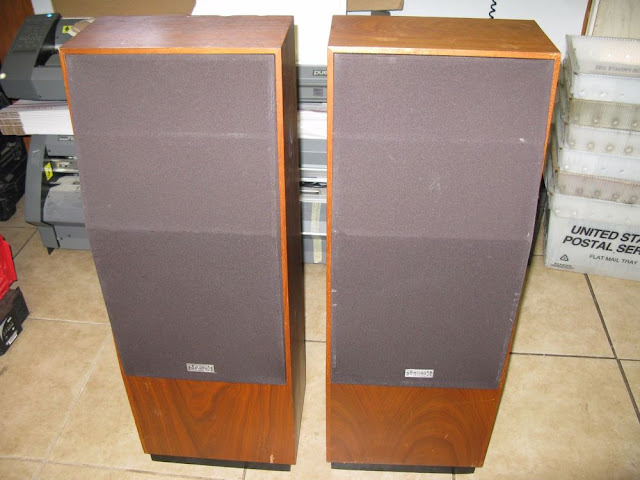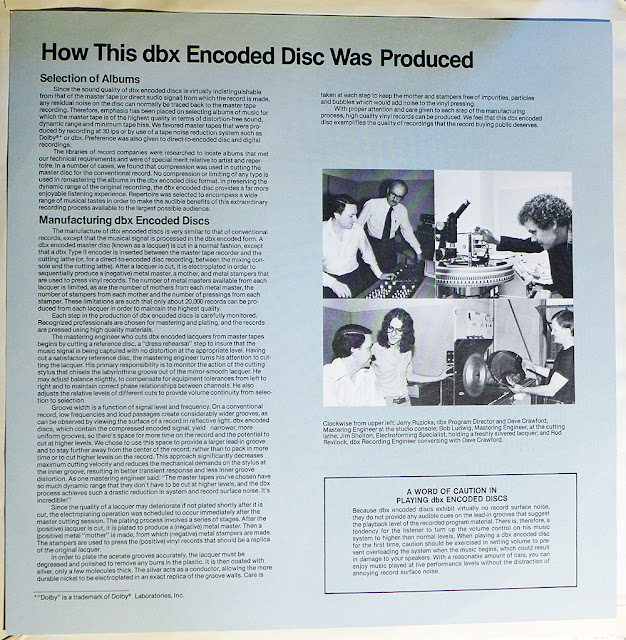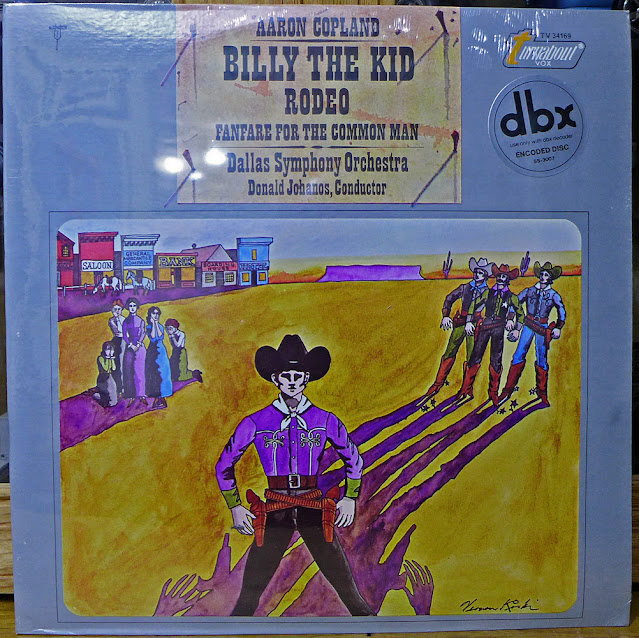November 15, 2022
#458
Gentle reader,
If you are of an age from when there was no "digital" anything. Then you listened to LP records and analog tapes, if you had a tape deck or reek-to-reel tape deck, that is.
The problem with analog tape recording is tape "hiss". Dolby Labs became the preeminent provider of tape noise reduction for both the music and film industry but for home use also. Countless millions of cassette tape decks have various types of Dolby noise reduction built right in.
But, there was a newcomer to this field of endeavor, and they called themselves "dbx".
They took it one step further and invented a way to greatly improve the way LP records sounded.
Look at the black strip across the top of these LP covers. "Super Disk" was an early form of Audiophile records. How successful they were, I do not know. The right LP is the only one I have. I DO have Audiophile LP records, and they do sound better to me.
But, dbx created an entirely different way to make TRULY better sounding records. They have ZERO surface noise, no tape hiss and much greater dynamic range than even the best audiophile or direct-to-disc record can produce. To find out more, here is a link to the Wikipedia page on dbx: dbx (noise reduction) - Wikipedia
I first came across a dbx "box" which is an encoder for making your audio tapes which you are recording sound better and lose the hiss. And a decoder for both dbx encoded tapes AND dbx encoded records. Here is what I found:
As you can see, it is pretty simple, control-wise. Once I had that, I began the search for dbx encoded records.
eBay has some, a small fraction of all the records that are for sale on the site. Discogs is a better choice, most sellers are just trying to get rid of records, they don't care (or so it seems based upon price) if there is a dbx sticker on it. But, the eBay sellers KNOW what they have and will try and get as much as they can for their dbx LPs.
Here is the back of the NX-40 box. Well marked, I see now that is is a TYPE II dbx box as is the one I use now.
These are just three of the fifteen Classical LPs I have found which are dbx Encoded. They were very inexpensive via Discogs.
I already showed you these two. It is the first Classic Rock record I have found and bought that is dbx Encoded.
So, it was with much anticipation that I sat down to listen to it. Firstly, I had to immediately turn down the volume, because day-am!, it was loud. Then, my mind was immediately blown by JUST how amazing it sounded! I cannot emphasize this enough, dbx WORKS!
If you click or tap on these (or any) pictures, you can read all the nitty-gritty they had provided to the listener.
Note, that I now have THREE different versions of this Aaron Copland album. It is from 1967 and the Dallas Symphony Orchestra from that era was renowned for excellent renditions AND excellent sounding recordings. More on these three below.
I spied this SEALED record on eBay and since I already had an Audiophile record of it as well as the standard LP, I bought it.
Back in those days, they included a lot of information, especially on Classical records about what you bought. Sometimes, they were on the paper sleeve that held the record, thus called "liner notes" or, in this case on the back of the cover.


Aside from the dbx information sheet within the cover was this card. I just looked up the address and it's not much of a building and there is no business name on it.
You can see the dbx II model 122 box I am using now. It is the second one I have bought. The first one had some kind of fault on one channel while decoding LP records, and no amount of contact cleaning helped. But, this one works superbly.  |
| Here is the back of it, note the three different kinds/brands of cables I have attached. |
I have written other articles on dbx encoded records, but with the new-to-me box and the two new records, I just could not keep it to myself, I had to share.Sadly, other than making a video and adding it to this article, there is NO way to truly show you JUST how incredible dbx encoded records sound. Analogue Productions produced this reissue LP. Sadly, they only did side one of the Copland LP and put some Charles Ives music on side two.I always thought it sounded fantastic. Until, I played the new dbx record. Now, it's "Meh".Ooh! "Limited Edition"! It is, but it has lost it's appeal to me. That IS the problem we music lovers (and those like me that like to get the best sound they can afford) have in that when we do hear something mind blowing, we want EVERYTHING to sound that good!Here is the system I have accumulated after more than forty years of buying and trying hundreds of components and countless speakers. The heart of the system is 1990's Panor-era Dynaco components. Right to Left is a PAT-6 preamplifier/tuner, a QD-2 passive surround sound device and a ST-200 power amplifier.
Everything was turned on for the picture. Small monitor is attached to the OPPO DV-980H universal disc player. Some DVD-Audio discs require making choices before playing. Beneath the OPPO is a TDK CD Recorder. To the right of them is my Nakamichi CD changer. Below that is a JVC three-head cassette tape deck.
On top is a vintage Realistic APM-300 audio power meter. On top of that is a speaker switch which I use to switch the meter from A to B speakers. The power amp actually switches the speakers. Turntable is an Audio-Technica fully manual unit with Ortofon Red cartridge.
Above, a fisheye view of the listening room. Some of the music collection is seen, but only some.Of the MANY speakers I have tried over the decades, those Cerwin-Vega! LS-12 units are the BEST sounding of any. Bar none. Inside of them are the only vintage Dynaco pieces I still own. They are A25XL models. The black tower speakers in the foreground of the fisheye picture are Tannoy C88 models. They used to sit where the Dynaco speakers do, but I felt that I was doing the Dynacos an injustice by only using them for rear/surround speakers.
The record shelf was a great thrift store find. It is two pieces which bolt together. The one thing I don't like about them is the side panels are at least ten inches deeper than the back. So, if there were a way to remove that excess WITHOUT harming the shelf, I would do so. But there is not. So, it sits a littler further into the room.
Anyway, thank you SO much for taking the time to read this article on dbx encoded LP records and some of the equipment required to listen to them. Oh, if you buy one and think, "I don't need a dbx box." You will be sorely disappointed.
Scott Robb
November 15, 2022
#458
Feel free to leave a comment below or on Facebook. Your kind words are of such power to keep me writing.
















































